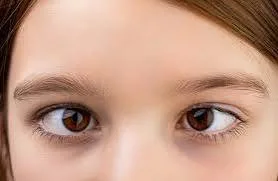What is a Squint?
A squint, also known as strabismus, is a condition where a child’s eyes do not look in the same direction at the same time. One eye may look straight ahead, while the other eye may turn inward, outward, upward, or 00000000000000downward. This misalignment can be constant or may happen only occasionally.
Causes of Squint in Children
Squint can occur in children for various reasons, 51and sometimes the exact cause may not be known. Here are some common causes:
- Genetics: Squints can run in families. If a parent or close relative had a squint as a child, there is a higher chance that the child might develop it too.
- Refractive Errors: This happens when there is a problem with the way light is focused inside the eye, like in cases of long-sightedness (hyperopia). The eye may turn to correct the focus, leading to a squint.
- Weak Eye Muscles: The muscles that control the movement of the eyes may not be working properly, causing the eyes to become misaligned.
- Eye Injuries: Trauma or injury to the eye can sometimes lead to a squint.
- Other Health Conditions: Some children develop a squint as a result of other medical conditions, such as cerebral palsy or Down syndrome.
How is Squint Diagnosed?
A squint is usually noticeable to parents or caregivers when the child’s eyes don’t seem to be looking in the same direction. An eye doctor, called an ophthalmologist, can confirm the diagnosis with a series of simple tests. These tests check how the eyes move and how well they work together.
Why is Squint Correction Important?
Correcting a squint is important not just for the appearance of the eyes but also for the child’s vision. If left untreated, a squint can lead to:
- Amblyopia (Lazy Eye): This happens when the brain starts to ignore the image from the weaker eye, leading to poor vision in that eye.
- Poor Depth Perception: The child might have difficulty judging distances if the eyes are not aligned properly.
- Social and Emotional Impact: Children with a noticeable squint may feel self-conscious or may be teased by others.
Treatment Options for Squint
There are several ways to treat a squint, and the right treatment depends on the cause and severity of the condition. Here are the most common options:
- Glasses: If the squint is due to a refractive error, wearing glasses might help correct the alignment of the eyes.
- Patching: If one eye is weaker, the stronger eye may be covered with a patch for several hours a day. This forces the weaker eye to work harder, strengthening it over time.
- Eye Exercises: Some children benefit from exercises designed to improve coordination between the eyes.
- Surgery: If other treatments don’t work or if the squint is severe, surgery may be recommended. This involves adjusting the muscles around the eyes to correct their alignment.
- Botulinum Toxin Injections: In some cases, an injection of botulinum toxin (Botox) into the eye muscles can help realign the eyes. This is usually considered when surgery is not an option or as a temporary solution.
What Parents Should Know
It’s important for parents to monitor their child’s eye development and seek medical advice if they notice any signs of a squint. Early detection and treatment can prevent long-term vision problems. Regular eye check-ups are also crucial, especially if there’s a family history of squints or other eye conditions.
Conclusion
A squint is a common eye condition in children that can affect their vision and self-esteem. Understanding the causes and treatment options can help parents take the right steps to correct it. With the right care, most children can achieve good eye alignment and vision, allowing them to see the world clearly.


